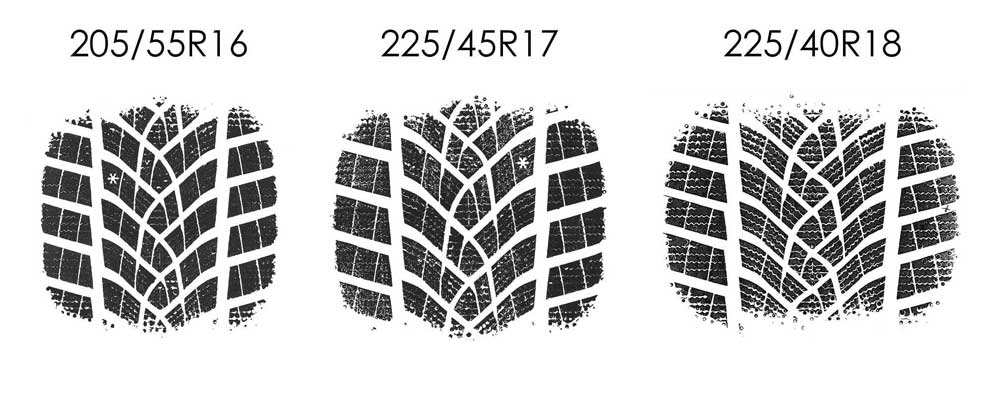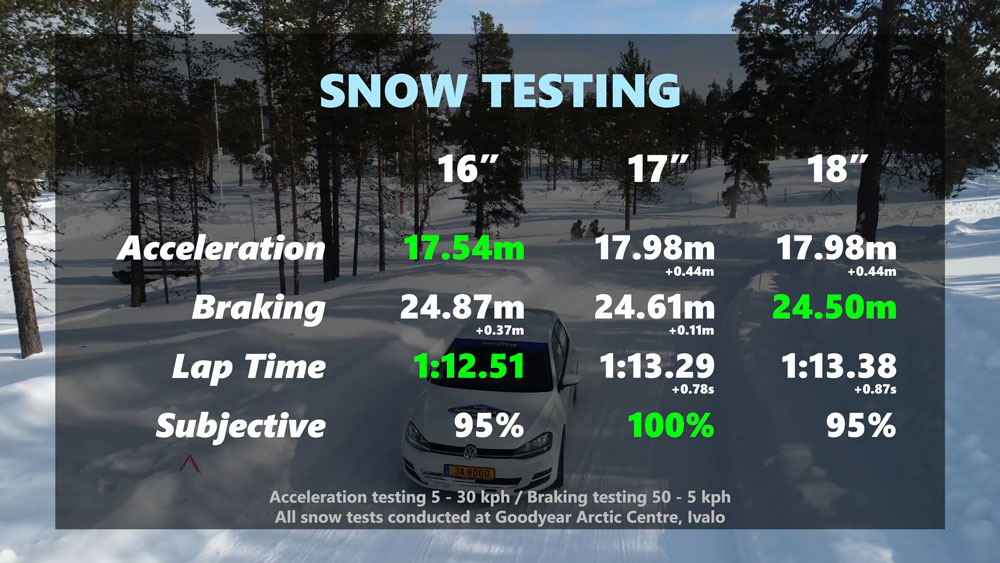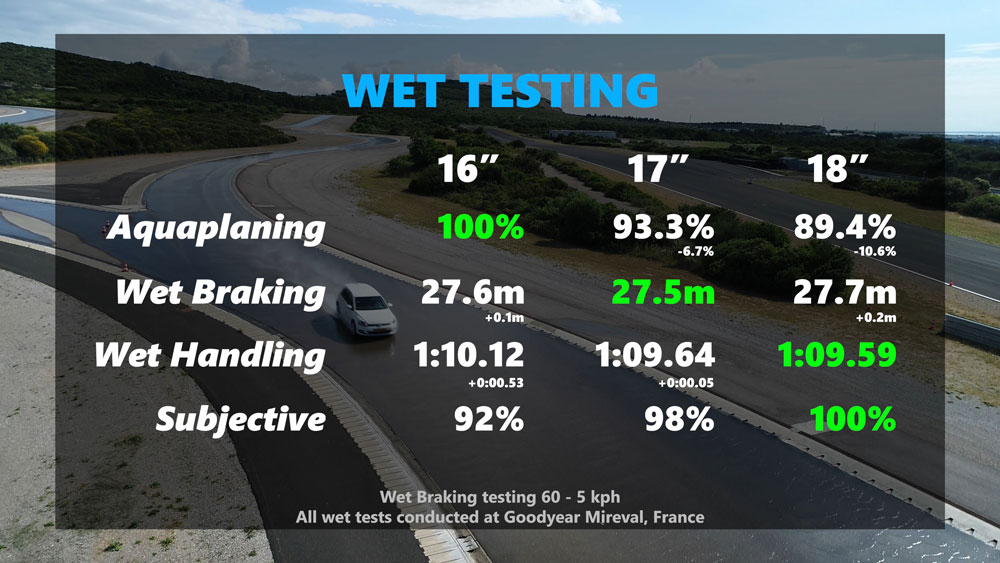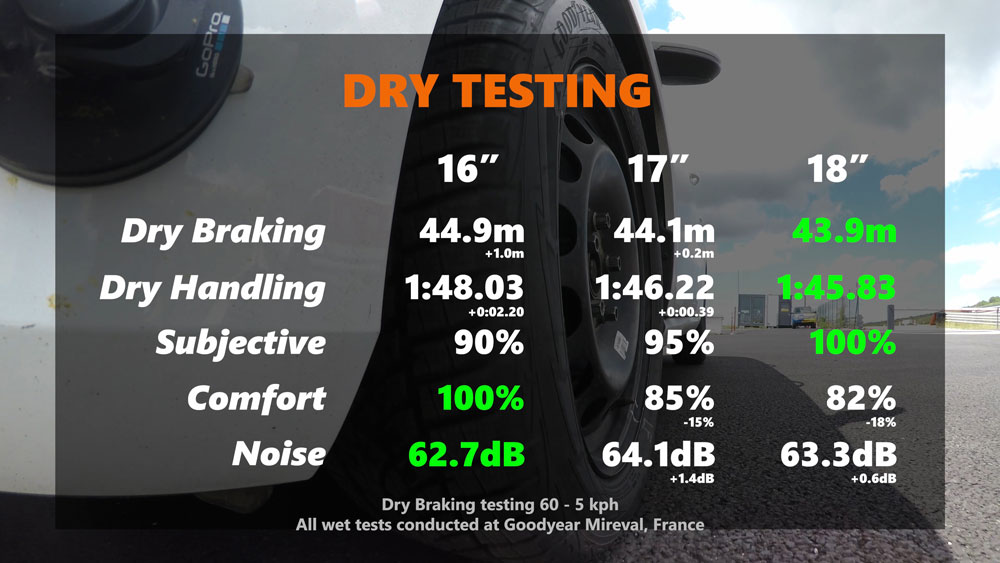What wheel and tire combination is going to give you the best winter performance? A narrow high sidewall of a 205/55 R16, a wide sporty 225/40 R18, or a compromise of the two sizes, at 225/45 R17? To test this theory we've used three versions of the excellent Goodyear UltraGrip Performance Gen-1 winter tire, and have carried out full dry, wet and snow testing using a VW Golf.
Watch the video below for the full details, or continue reading the article to find some of the key points!
The biggest difference between the tires is the fact the 16 inch size is only 205mm wide, whereas the 17 and 18 inch sizes are both 225mm wide.

When looking at different winter tire sizes, one of the biggest theories is narrow is better, as it gives the tire a greater ability to cut through the snow to the surface below. The counter argument for this is the fact wider tires have more edges thanks to more sipes, which allows them more grip.
Snow
In theory, the biggest difference will come from snow performance, but in practice the objective timed differences were tiny!

Subjectively there was a slightly bigger gap between the three winter tire sizes, but again it was very close. The 17 inch wheel and tire combination proved to have the best overall balance, giving you a predictable and stable car, whereas the 16" seemed to be a little quicker on the front axle which resulted in oversteer at the rear, and the 18" gave you less communication at the limit which resulted in surprise understeer at points.
Wet
During wet testing the situation changed in favour of the wider tires, but again the gaps were tiny.

The narrower 16" tire was always going to win the aquaplaning testing, and it even managed to split the 17" and 18" tires during wet braking, but it was half a second off the 17" and 18" tires during wet handling.
Subjectively the tires were slightly further apart than in the snow, with the 17" and 18" tires feeling broadly similar, and the 16" tire struggling more with slow steering and understeer at the limit.
Dry
In the dry, the wider tires definitely had a performance advantage.

The wider 17" and 18" tires had a clear advantage during dry braking, which directly carried over to dry handling. The 18" was the sharpest feeling tire on test, and definitely the tire you'd want fitted to and sort of sports car.
The 16" tire had a huge advantage in noise and comfort levels, crashing far less over road imperfections and potholes, something that's important to consider for the UK's winters. The noise levels between the 17" and 18" tires sounded fairly similar, but were different tones so registered differently on the dB meter.
Conclusion
It's fair to say that the differences between a good winter tire and a bad winter tire are far greater than the differences between a 16", 17" and 18" winter wheel and tire combination.
If you're driving a sportier car and want to retain some level of driving enjoyment over the winter, the wider, lower profile tires are better.
If you'd prefer ultimate comfort and low noise levels for your winter motoring, fit a wheel and tire combination that maximizes the tire sidewall you can fit, as this will give you the highest levels of NVH.
Ultimately, the most important thing to consider is not what winter tire size you pick, but what winter tire you pick in any size, so be sure to check out all the reviews and tests on Tire Reviews to help you make the best winter tire choice for your vehicle.







